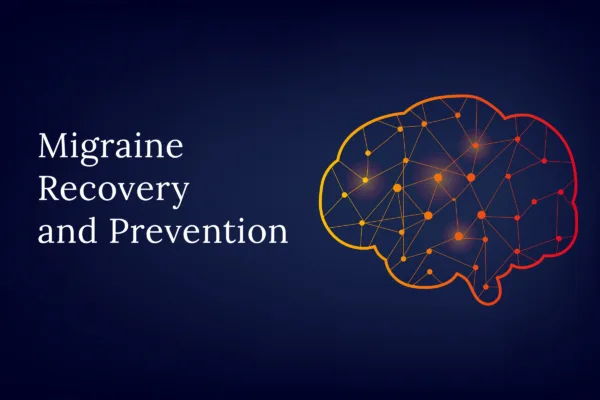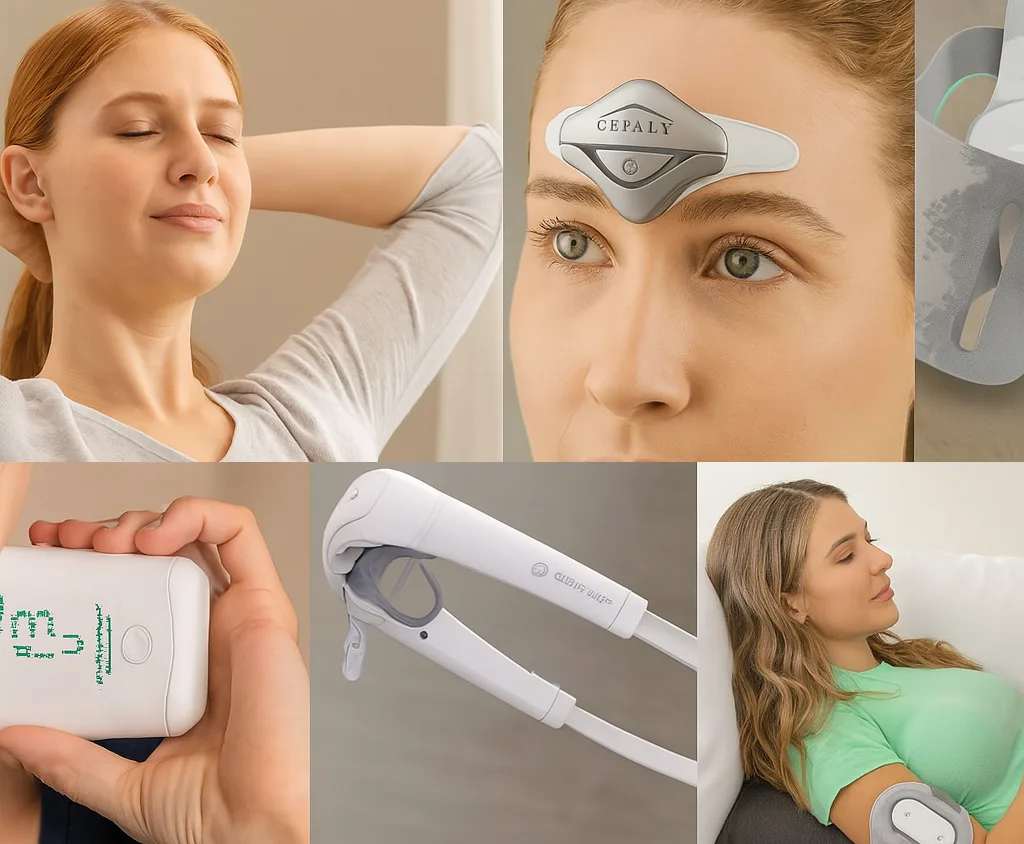You’ve likely come across the use of magnets and nerve stimulation as potential migraine treatments. While these options may seem intriguing, remember that you play a crucial and empowering role in developing the best treatment plan for your migraines. Your active participation and input, in collaboration with your consultant, are not only meaningful but also crucial to the process. This partnership can lead to the most effective solution, empowering you to manage your migraines.
Why Choose Non-Invasive Neuromodulation Devices for Migraine Management?
Thanks to scientific progress, patients are increasingly interested in non-pharmacological therapies, such as non-invasive neuromodulation (NINM) devices. These devices, known for their safety and remarkable effectiveness, can be used to treat or prevent migraines. You can use them individually or in combination with your medication, as advised by your healthcare professional, without compromising the efficacy of your medicine. The proven effectiveness of these devices is a compelling reason you might consider them for migraine management.
- You want to avoid drug interactions.
- You are advised not to take migraine medications if you have any other existing medical conditions.
- You find that migraine medicines aren’t working.
- You want to cut down on painkillers.
- You plan to get pregnant.
What is Neuromodulation?
Neuromodulation is a fancy term for a simple concept. It’s the process of using devices to send small electrical or magnetic signals to your nerves. These signals can help to calm down your nervous system, which can reduce or even prevent migraine attacks. In other words, these devices work by gently stimulating your nerves to help alleviate your migraine symptoms. You can either wear these devices or hold them against your body part to provide relief during an attack, without drugs or needles.
What Are Different Types of Neuromodulation Devices?
The Food and Drug Administration (FDA) has approved various types of devices for safe use. These devices target different nerves or areas related to migraine development.
Cefaly:
It is also known as the Transcutaneous Supraorbital Neurostimulator (t-SNS) or the External Trigeminal Nerve Stimulation (e-TNS) device. The Cefaly device has two settings: one for treating acute migraines and the other for preventing migraines.
Placement: Forehead
Treatment Duration: Preventive treatment lasts for 20 minutes, whereas with acute migraine, it lasts for one hour.
Function: It stimulates the trigeminal nerve above the eyes, which helps alleviate migraine pain. The tingling or tapping sensation helps reduce the intensity and frequency of migraine.
Limitation:
It is not for you if you:
- Have a metallic or electronic device implanted in your head.
- If you are suffering from an unknown pain.
- Have a heart pacemaker or a defibrillator.
Side Effects:
- Device intolerance on the forehead.
- Allergic skin reaction.
- Fatigue or headache during and after the session.
GammaCore:
This device is also known as a non-invasive vagus nerve stimulation (nVNS) device. It is a safe, portable, and handheld device that you can use during the onset of a migraine.
Placement: Either side of the neck
Treatment Duration: The treatment module consists of three cycles, each lasting two minutes.
Function: It stimulates the vagus nerve, which blocks the pain signals. It is highly effective for cluster headaches. However, patients have also found it effective for migraines.
Limitation:
It is not for you if you:
- Are pregnant.
- Have carotid atherosclerosis or were born with heart issues.
- Undergone any prior vagal nerve surgeries.
- Have high or low blood pressure or heart rate.
- Have an implantable electric stimulation device or an implanted metallic device.
Side Effects:
- Skin irritation
- Muscle twitching
- Pain
Nerivio:
It is also known as Remote Electrical Neuromodulation (REN). You can control Nerivio through an app on your smartphone. It is effective for patients with episodic migraine.
Placement: Upper arm
Treatment Duration: 45 minutes or one hour from the onset of migraine.
Function: It stimulates the peripheral nerve in your arm. It triggers inhibitory pathways in the brain, generating a natural pain response. It is for patients 12 years and older.
Function: It is one of the devices that targets multiple nerve pathways, both the orbital nerve and the trigeminal nerve. It is typically used only under a physician’s supervision.
Limitation:
It is not for you if you:
Have an implantable electric stimulation device or an implanted metallic device.
Side Effects:
- Numbness
- Tingling sensation
- Pain
- Skin irritation
- Mild pain in the arm, shoulder, or neck
Relivion:
Placement: Head
Treatment Duration: 20-60 minutes per session.
Function: It is one of the devices that targets multiple nerve pathways, both the orbital nerve and the trigeminal nerve. It is typically used only under a physician’s supervision.
Limitation:
It is not for you if you:
Have an implantable electric stimulation device or an implanted metallic device.
Side Effects:
- Scalp numbness
- Tingling sensation
- Pain
- Skin irritation
- Sleepiness or dizziness
What Are The Benefits?
- No effect on other systems of the body.
- They are a good alternative to medicines.
- Patients can take control of their treatment.
- Safe to use with minimal complications.


















